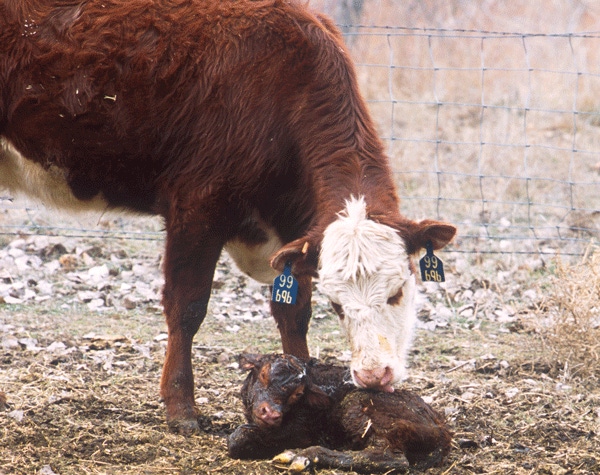February 22, 2011

As calving season begins, producers are keeping one eye on the weather and the other eye on the cows.
Iowa State University (ISU) Extension beef veterinarian Grant Dewell shares five tips on helping calving season be as successful as possible for producers, regardless of the weather conditions.
Be ready
This is likely the most important aspect of the whole process. Clean calving areas, make sure plenty of bedding is available and gather supplies, including calf chains, calf puller, bucket, disinfectant, lubricant and heat lamps.
Watch females closely
You should be checking females on a regular basis — at least every four hours — for evidence of parturition. Losing a calf at calving because the cow was not assisted in time is like throwing away $600.
Milk colostrum from dystocia cows for immediate feeding
Dystocia calves, those born from difficult labor, will have a prolonged time before they stand and nurse so it is imperative to have colostrum available immediately. Milk some colostrum from the cow while she is caught up to have it ready for that calf.
Segregate cows
Segregate cows into at least three groups — pregnant cows, neo-natal calves and cows, and older calves and cows. Calves between one and 21 days of life are most at risk of disease, so keeping these high-risk calves separate from the others in the herd can decrease disease incidence. If you have a disease outbreak, be prepared to keep this youngest group of calves isolated from all other calves.
Consider calving later in the year
Calves do better when calved in the clean, dry and warm environment of June rather than March. Also, green grass will better meet cows’ energy needs during peak lactation.
You May Also Like




